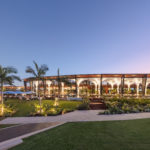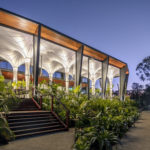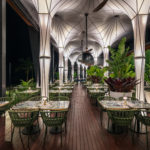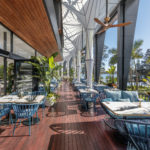Company:
Pattons and ABC Products
Project Details
Fabric 1
Hiraoka Sundream
Producer/Manufacturer:
Hiraoka & Co. Ltd.
Primary Use:
Main Fabric
Engineer Name 1
Joseph Dean:Greg Thomas
Engineer Company 1
Wade design Engineers
Design Name
Tom Gastin
Design Company
Pattons
Architect Name
Charlie Hearn
Architect Company
Inspiral Architects
Fabrication Name
Tom Gastin:Jim Gordon:Mark deRiviere
Fabrication Company
Pattons/ABC Textile Fabrication
Subcontractor Name
Jason Barnes
Subcontractor Company
McKanna Fabrications
Graphics Name
Natalie Johnson
Graphics Company
Joghnson Property Group
Project Manager Name
Tom Gastin:Kate Cramp
Project Manager Company
Pattons
Installation Name
Dan Wright
Installation Company
Pattons
Please describe the project specifications
This project was located in the Central Coast of New South Wales, Australia. It was not only designed to create a visual impact, but also to provide extensive coverage to maximise the outdoor dining area table space and increase revenue for the restaurant.
We were approach by the client to bring a design vision to life. We were asked to come on board to use our expertise to bring this project to fruition and create a visual impact that would create global publicity for the restaurant.
The structure itself was designed inside out. The steel frame for the structure was to be on the outside of the tension membrane, and be completely concealed by the material. It was also designed to collect water to create a waterfall effect against the tension membrane, to provide recycling opportunities of re-using rainwater that the structure can collect to irrigate a tropical garden.
The project was required to meet the expanding needs of our client. This restaurant is part of a larger development including a marina and residential accommodation and its completion brought the 2 existing areas together.
The whole development is the centrepiece of our clients property portfolio.
This structure was not only designed to provide weather protection, but to also create a living geometry that surrounds all the patrons of the restaurant.
The movement of water on the structure during the rain creates a warm tropical feeling whilst creating a "water feature" like aesthetic resemblance.
What is unique or complex about the project?
Unlike the majority of tension membranes which are built on top of a steel frame, the structure was built the other way around. All the steel was to be hidden and suspended from a freestanding frame where the columns were protruding through the Conics. This meant that the steel frame had to be craned in and built through the small openings of the tension membrane conics. The steel columns for 300mm in diameter and the narrowest part of the conics was 400x400mm.
This also meant the membrane had to be fabricated prior to the steel being installed which meant the design and fabrication of the steel work, along with the patterning of the material needed to be millimetre perfect. It also meant that there was no room for adjustment or any changes to the membrane after the steel was installed. There was no opportunity to provide a survey of the as built structure prior to fabric patterning.
There was zero room for error in the design and planning process. Every stage of design needed to be triple checked and extensive modelling was completed to make sure that everything would fit. There was only one chance to get this right with no room for mistakes.
There are many challenges on this project. There were several contractors involved so planning had to be at its best. Collaboration with all contractors, designers of all components, fabricators and installers meant that there were twice weekly zoom meetings involving everyone that had a part in the project including electricians, plumbers, fan suppliers, carpenters, steel fabricators, earthworks and installers. Constant and clear communication is key for this project allowing everybody to provide feedback and search for any hiccups that maybe face along the way. If any of these stages dropped off, the project had the potential to be a complete disaster.
When taking on projects of this calibre it is important to have access to the specialist in every field. Fortunately, there was a brilliant crew at hand across all aspects of this project who worked in sync and with cooperation to iron out any potential obstacles.
Another very unique part of this project from a textile fabrication perspective, were the seams on this project. Usually seams are made subtle in design of membrane structures, however in this case, every single seam on this project had a black welded strip over the top of it. This was to create a feature of the seams, and provide a strong contrast between the highly translucent material and the geometric lines of the patterning.
As there were plenty of seams on this project to create the shape, this also meant that there are a lot of intersection points where several seams were coming together in one location. This meant that some detailed fabrication techniques were required to avoid having bunched weld bleeds at these intersections.
There also many other challenges in fabrication such as:
- Working with translucent fabric to give the illusion of black wired cable seams.
- complexity of multiple panels creating overlapped joint and intersection points.
- vertical column fabrication with blind welds
- welding additional fabric to seams without compromising stretch or shrink characteristics.
- hot airing joins without compromising translucency of fabric
- creating 90 degree corners using fabric reinforcing and custom tooling to accompany hot air gun.
- fabricating stage two which consists of 8 inverted conical as one piece.
Although not the largest job we have completed, the installation of this project was probably the most complex project we have been involved in. Building the steel through the fabric was a big challenge. We had a full-time fabric crew during the steel installation, to make sure none of the membrane was damaged during this process. This took extensive focus and the install was completed without any damage to the membrane.
A lot of time was spent on design methodology. Every step of the installation process was simulated with all involved three times prior to the installation. This meant we sat down for hours on Zoom meetings during Covid lock-downs to talk through every single step to make sure that any components or steps in the process went missed when it came time to install.
As all stages of the steel were being built, manual measures were checked against every steel member to make sure the detail patterning of the membrane would be accurate.
The result of all this work was a spectacular vibrant structure, that created beautiful natural light during the day, and a flamboyant illuminated ambience at night time.
Fabric selection was also key to this project with several testing processes involved to create the visual effect that was required through lighting and natural light.
The result of all this work was a spectacular vibrant structure, that created beautiful natural light during the day, and a flamboyant illuminated ambience at night time.
Fabric selection was also key to this project with several testing processes involved to create the visual effect that was required through lighting and natural light.
The client was delighted with the end product. Customers walk into the restaurant and ask to be seated outside under this living structure. When they opened the outdoor area to the public in the new area their social media pages went crazy, bringing more and more people into the restaurant to dine creating the publicity the restaurant were after.
Content is submitted by the participant. IFAI is not responsible for the content descriptions of the IAA award winners.
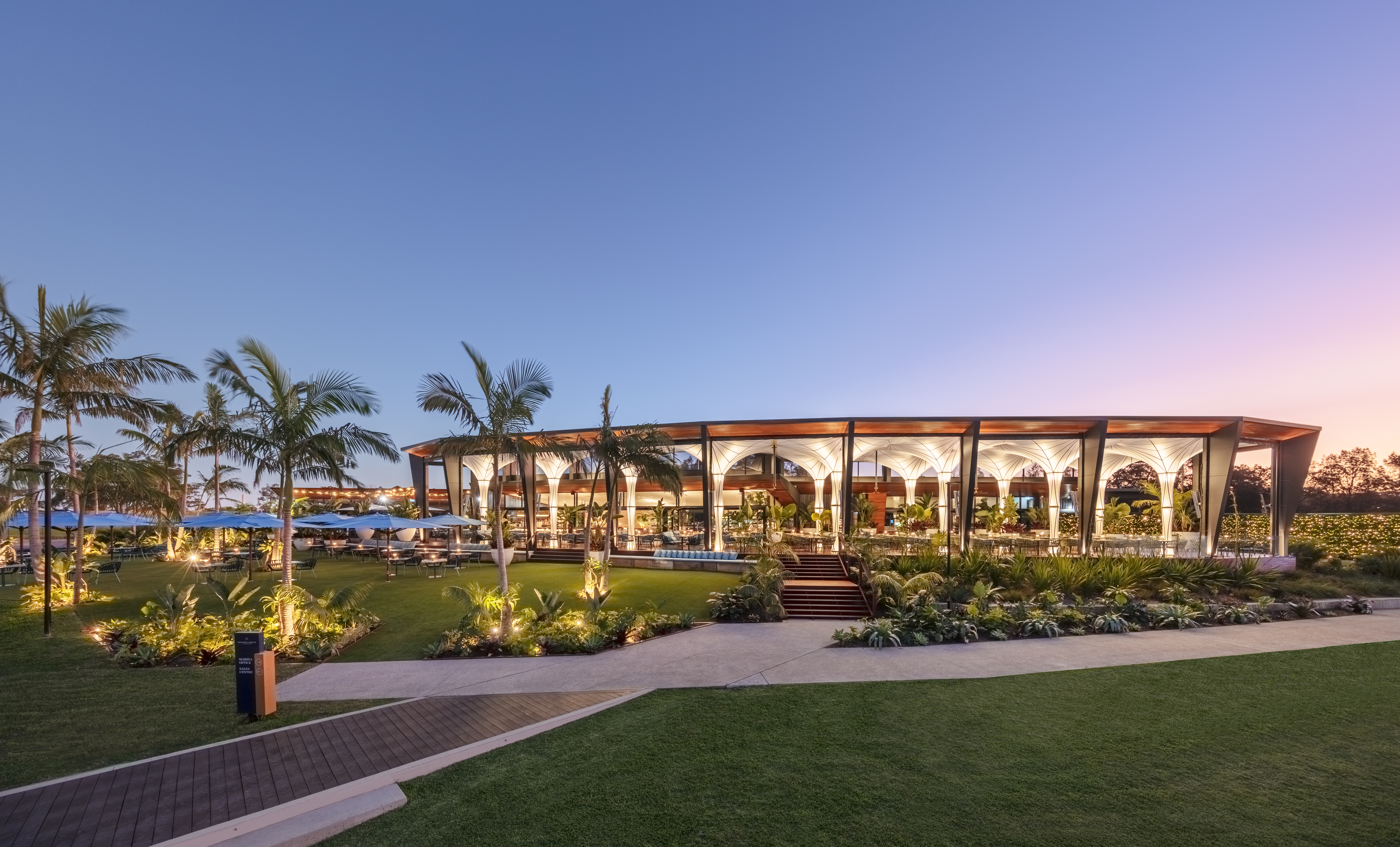
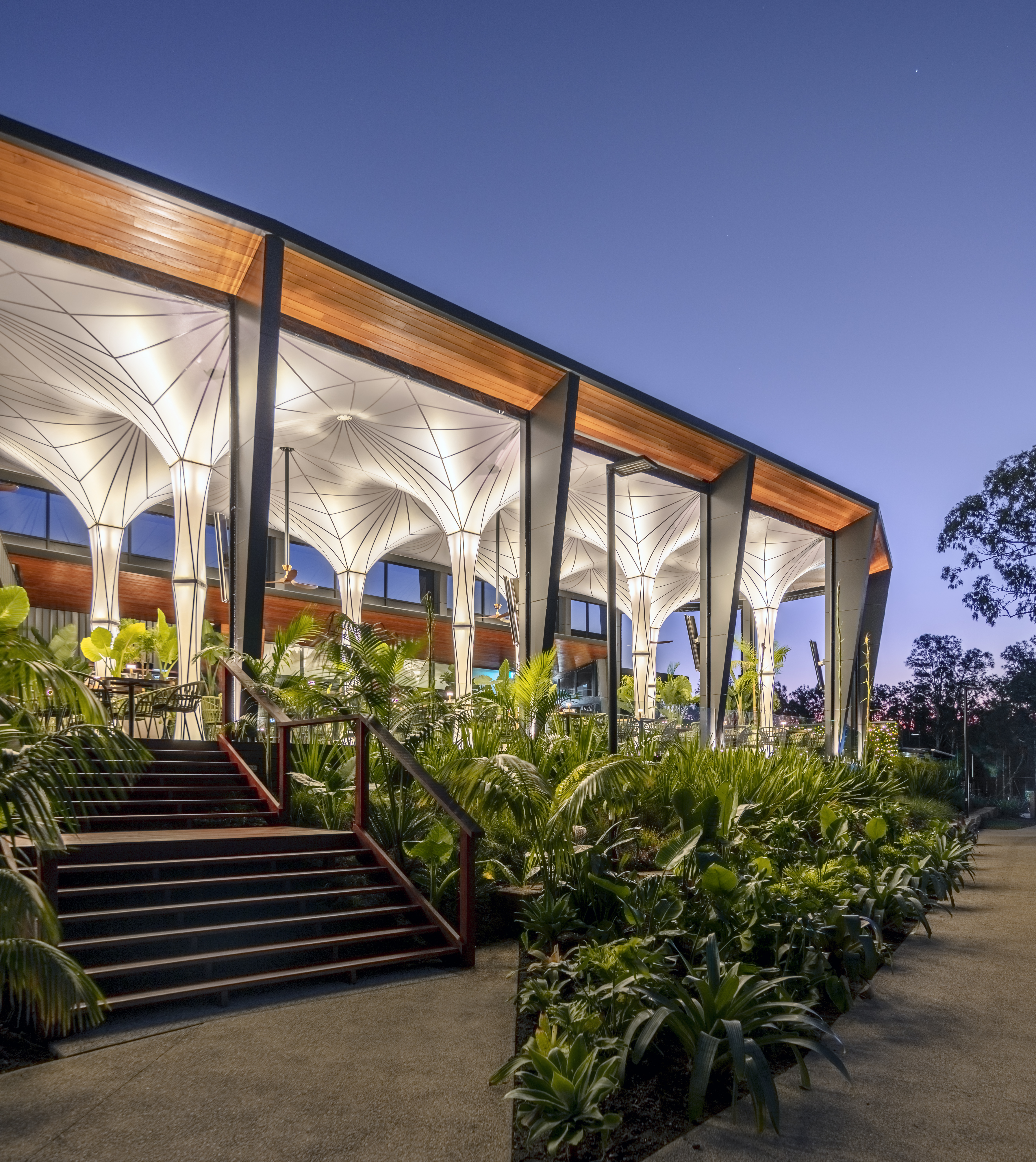
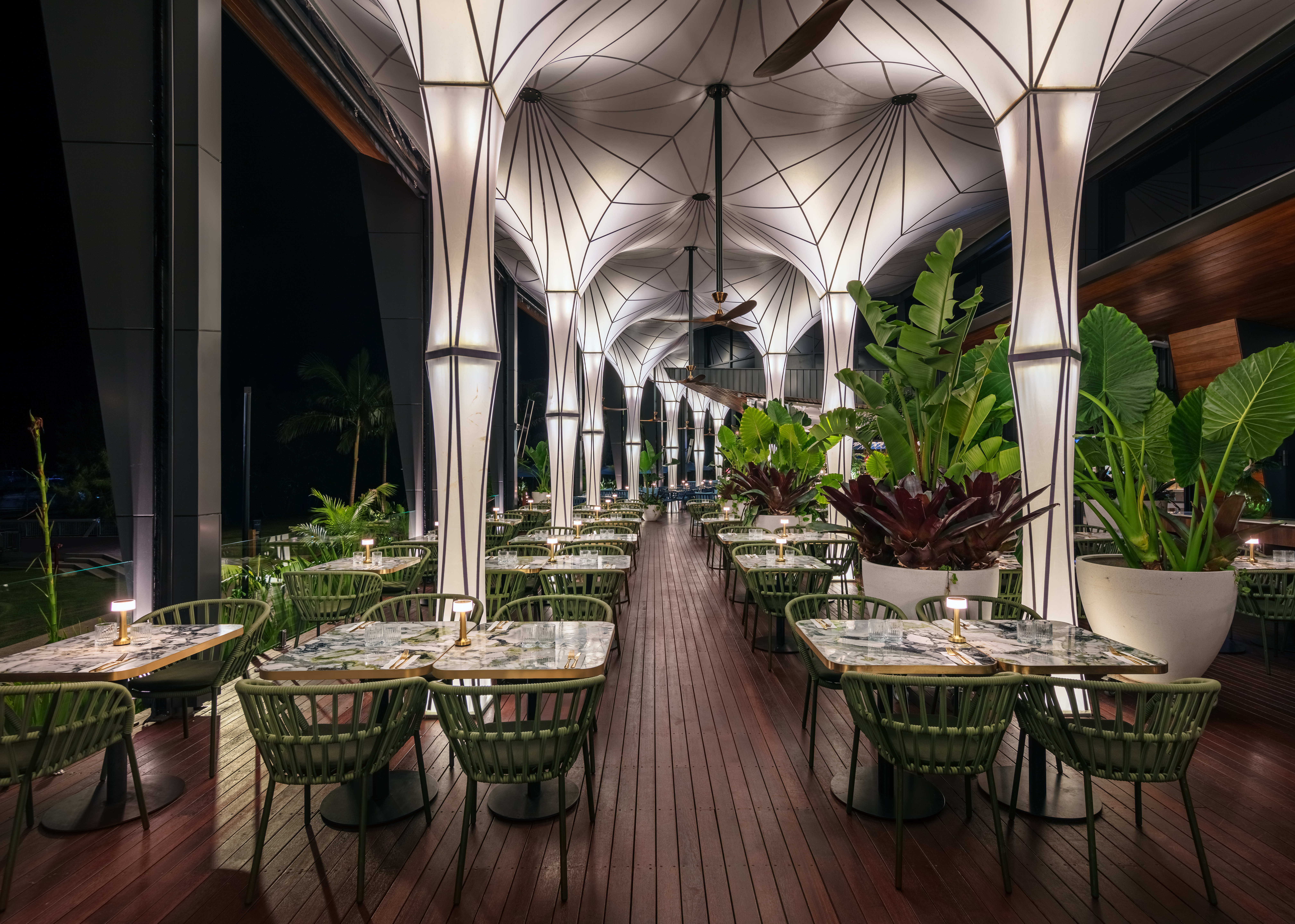
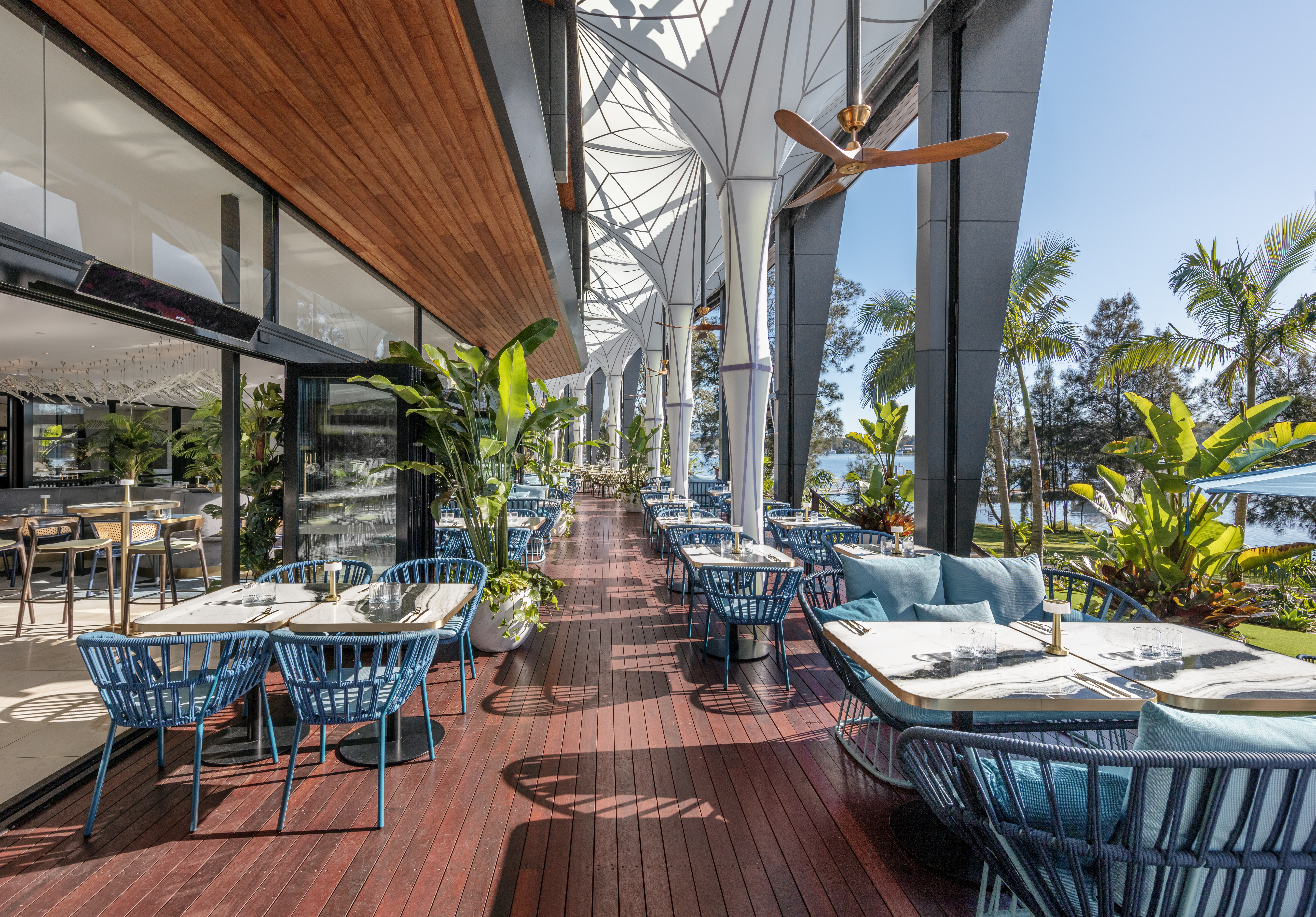
 TEXTILES.ORG
TEXTILES.ORG



